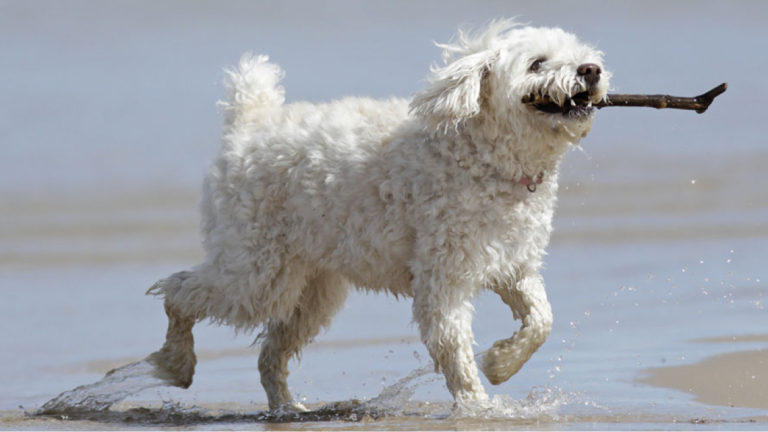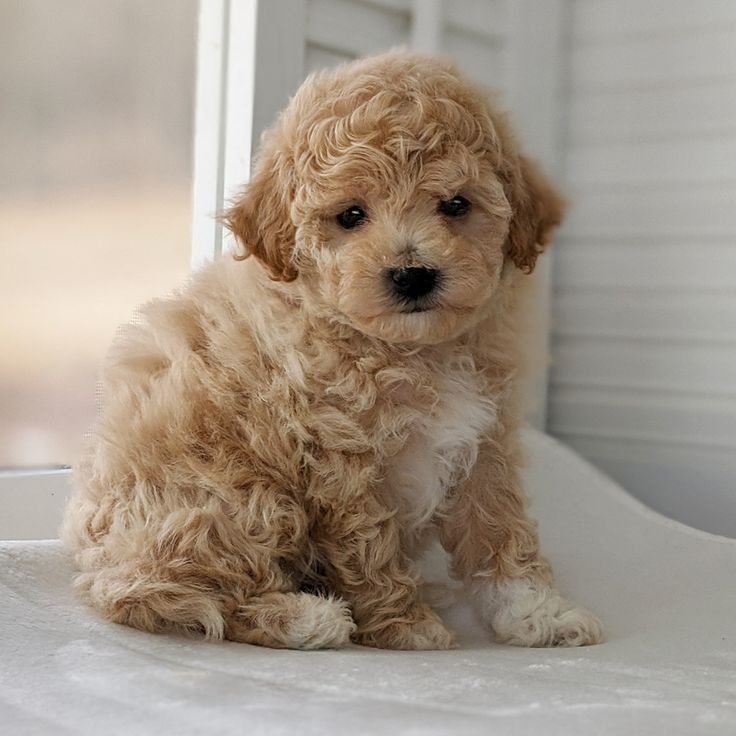About Cockapoo

Personality
Intelligent and easy to please, the Cockapoo was established as a companion dog. He’s friendly and happy, happy, happy. He has an outgoing nature and usually gets along with everyone. Depending on his temperament, he can be active or he can simply enjoy snuggling up on the couch with you.
He has the intelligence of his Poodle forebears but also the sweet disposition of his Cocker Spaniel ancestry. If the parents don’t have the loving quality that is expected in a Cockapoo, then their offspring won’t either.
Like every dog, the Cockapoo needs early socialization — exposure to many different people, sights, sounds, and experiences — when they’re young. Socialization helps ensure that your Cockapoo puppy grows up to be a well-rounded dog.
He prefers, always, to be with his family and can suffer from separation anxiety when left alone for too long. He can be easy to train, though that’s dependent on the parents’ temperament. Positive reinforcement is the best way to train a Cockapoo; he can achieve high levels of obedience with time and patience.
Feeding
Recommended daily amount: 1/4 to 3/4 cup of high-quality dry food a day, divided into two meals.
NOTE: How much your adult dog eats depends on his size, age, build, metabolism, and activity level. Dogs are individuals, just like people, and they don’t all need the same amount of food. It almost goes without saying that a highly active dog will need more than a couch potato dog. The quality of dog food you buy also makes a difference — the better the dog food, the further it will go toward nourishing your dog and the less of it you’ll need to shake into your dog’s bowl.
Keep your Cockapoo in good shape by measuring his food and feeding him twice a day rather than leaving food out all the time. If you’re unsure whether he’s overweight, give him the eye test and the hands-on test.
First, look down at him. You should be able to see a waist. Then place your hands on his back, thumbs along the spine, with the fingers spread downward. You should be able to feel but not see his ribs without having to press hard. If you can’t, he needs less food and more exercise.
For more on feeding your Cockapoo, see our guidelines for buying the right food, feeding your puppy, and feeding your adult dog.
History
When it comes to designer dogs, the Cockapoo is an old hybrid, popular since the 1960s. The first breeding may have been accidental, but the happy result was a litter of puppies who were intelligent, almost odorless, had the low-shedding Poodle coat, and showed the easygoing and loving nature of the Cocker Spaniel. These puppies were well received, and the Cockapoo line began.
Some efforts are being made today to establish breed standards and start the Cockapoo on the hard road of becoming a true breed, one producing offspring with consistent traits. They’re one of the few designer breeds who aren’t owner-surrendered at high rates, even now, and many fanciers of the breed attribute that desirable circumstance to the Cockapoo’s intelligence and his sweet and loving disposition. He’s become a highly prized family dog.
Once the Cockapoo became more well-known, he only grew in popularity. Some Cockapoo breeders want to make the Cockapoo a purebred dog and use multigeneration crossing, while other breeders prefer the basic Poodle/Cocker cross. There are Cockapoo clubs, but they’re unaffiliated because of these differing philosophies.
The Cockapoo Club of America formed in 1999 and, in an effort to create breeding consistency, it created a breed standard. The club promotes breeding multigenerational Cockapoos to each other as opposed to creating new first generations, because this technique is supposed to help puppies maintain the desired qualities that aren’t seen in all first-generation dogs.
The American Cockapoo Club was formed in 2004; these members don’t mix generations and don’t breed a Cockapoo back to a Poodle or a Cocker Spaniel. They too have a breed standard, and their goal is “to see genuine Cockapoos bred with lines that can be traced back to their originating roots of AKC/CKC Cocker Spaniels and AKC/CKC Poodles.”
The North American Cockapoo Registry is also working to establish the Cockapoo as a viable breed. This group formed in 1999 and provides certification for Cockapoos who are the results of first- through sixth-generation breedings. The Registry stipulates that “a true Cockapoo is ONLY a purposeful, planned crossing of a purebred Cocker Spaniel with a purebred Poodle.”
Breeding philosophies aside, the Cockapoo’s popularity hasn’t just held steady — it has increased over the decades. With the help of responsible breeders and national organizations and clubs, the Cockapoo, in one form or another, could be on his way to becoming much more than a “designer breed.”

Care
Most Cockapoos have a moderate level of energy, but that doesn’t mean they’ll laze around all day. They enjoy a good walk — and need it to keep them from becoming overweight. The best type of exercise, though, is a good play session in the backyard. Expect him to need at least 15 minutes of exercise every day.
The Cockapoo is an adaptable breed. He can live in an apartment, though the smaller varieties seem to do better there than do the Maxi or Standard Cockapoos. None of them should live outdoors or in kennels, since they’ve been bred to be companion dogs. They thrive when with their family and can suffer from separation anxiety when left for long periods of time — and that can lead to excessive barking and to destructive behavior.
Crate training benefits every dog and is a kind way to ensure that your Cockapoo doesn’t have accidents in the house or get into things he shouldn’t. A crate is also a place where he can retreat for a nap. Crate training at a young age will also help your Cockapoo accept confinement if he ever needs to be boarded or hospitalized.
Don’t stick your Cockapoo in a crate all day long, however. It’s not a jail, and he shouldn’t spend more than a few hours at a time in it except when he’s sleeping at night (although he would much prefer your bed). Cockapoos are people dogs, and they aren’t meant to spend their lives locked up in a crate or kennel.
Living Needs
Lucky for everyone, the cockapoo finds happiness in almost any home. So long as their exercise needs are met, they’ll thrive in an apartment just as well as a house. However, the standard or maxi-size cockapoo is happiest in a house with a small fenced-in yard to run around and play.
Cockapoos are happy with other dogs or cats as companions. Like any dog, they’ll need proper socialization as puppies to understand how to live with multiple animals. But their happy-go-lucky nature makes it easier to integrate them into a home.
This breed is ideal for anyone with love to give. Cockapoos adore families-children, seniors, and everyone in between. Smaller children will have to learn the proper way to handle a puppy, and the cockapoo will reward them with a lifelong companion. Never leave a child unsupervised with any dog.
Black and White Cockapoo
Cockapoo running on beach
Cockapoos don’t mind water-in fact, many end up loving to swim and accompanying their families to the lake or the beach. Their poodle parents were bred to retrieve small game from water, so cockapoos are born with some water-loving tendencies. Expose them to swimming early to “test the waters,” and you may have a lake house dog on your hands.

